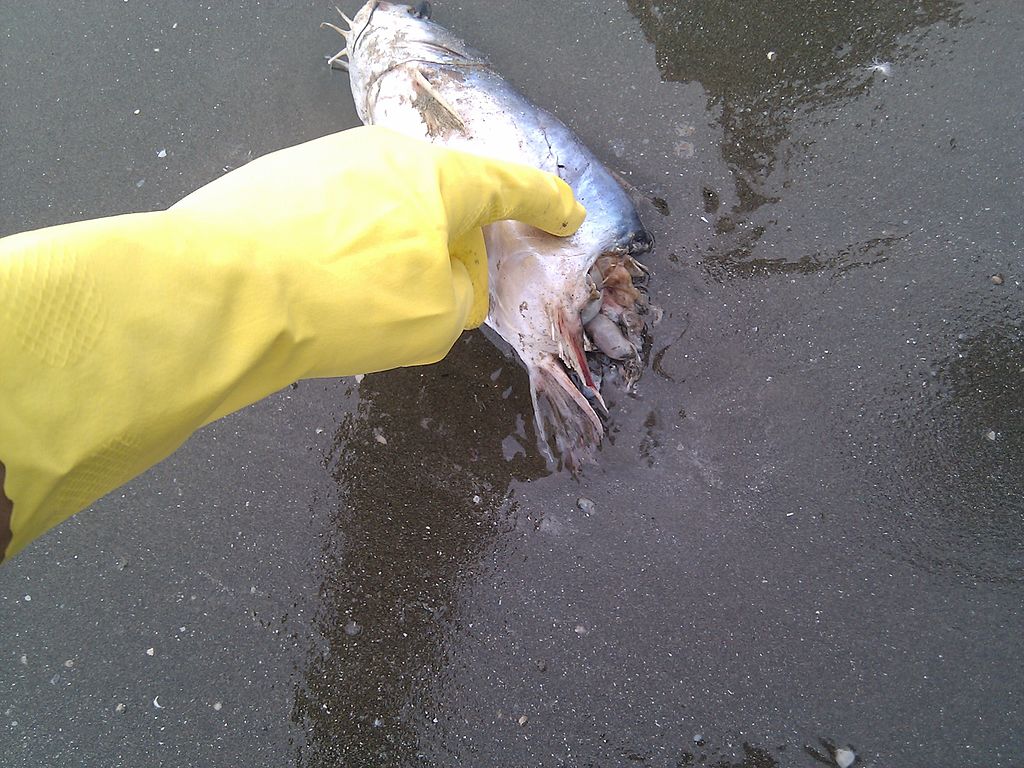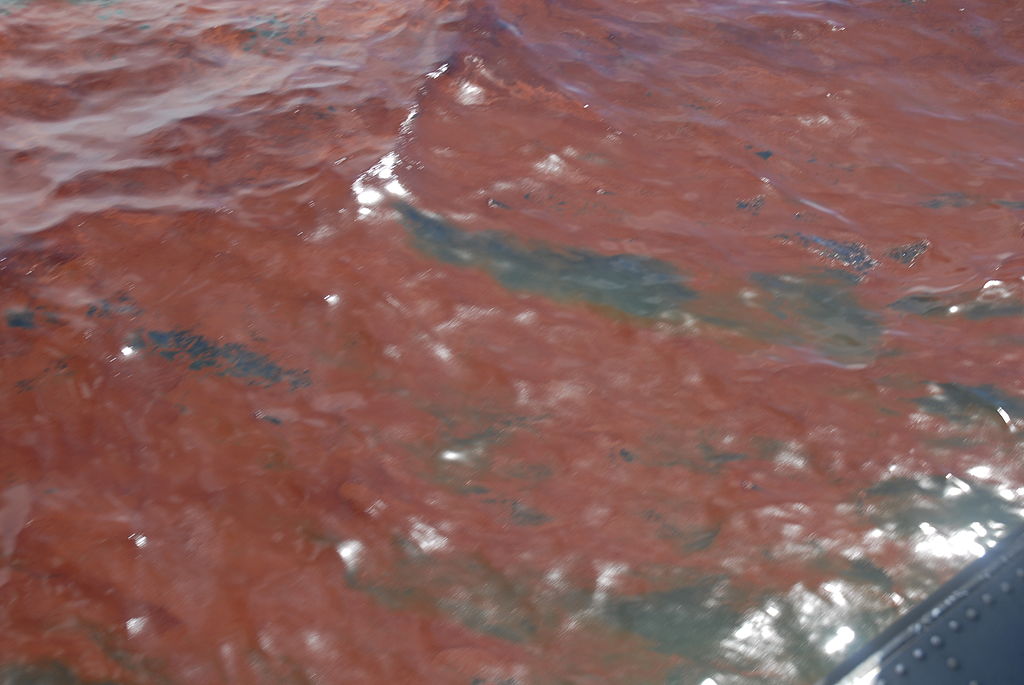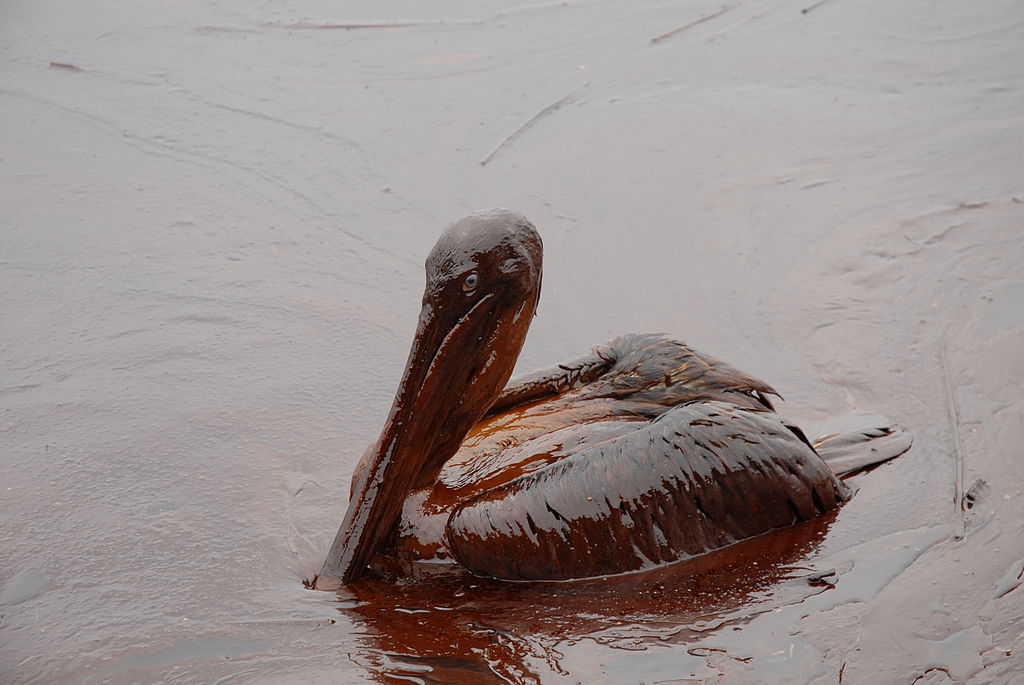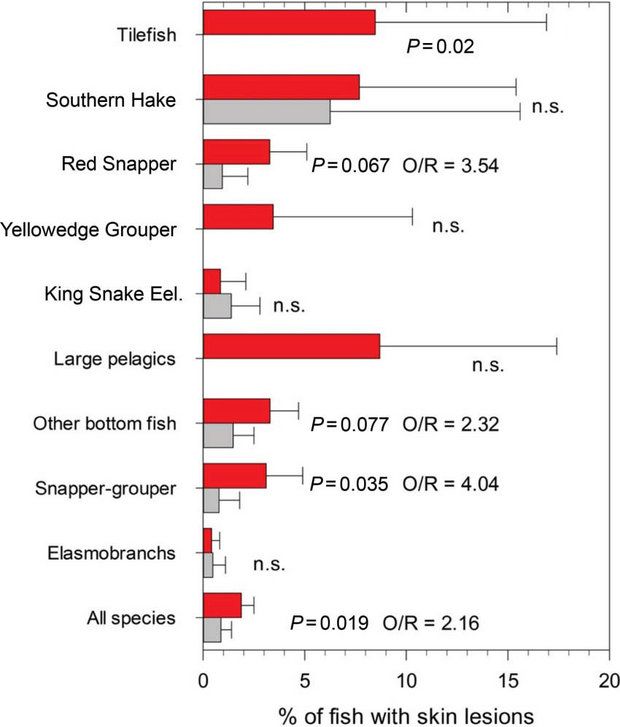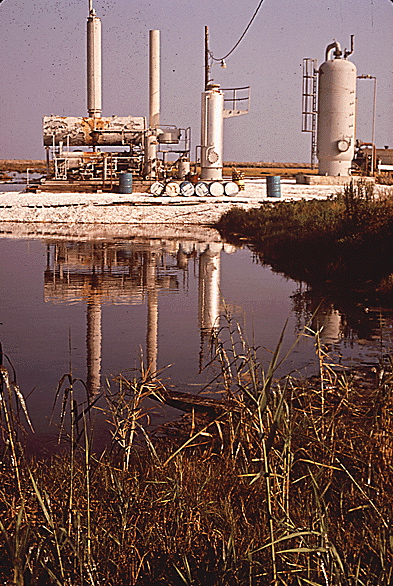Energy: Past & Future
The Deepwater Horizon Oil Spill
On April 20, 2010 the Macondo wellhead, operated by British Petroleum (BP), began an uncontrolled blowout. Over the course of the next 87 days it spewed 4.9 million barrels (estimated by the US government) of crude oil. The impact of this spill is immense and multi-faceted. The death of oil covered marsh grasses leaves bare land vulnerable to erosion. While the detrimental impact of the spill on commercial fisheries is well documented, academic studies as well as the media often fail to account for the losses of subsistence fishers. Subsistence fishing is common in coastal communities and its interruption is both an economic and cultural loss.
Deepwater Horizon Offshore drilling unit burning during the 2010 BP Oil Spill. Public Domain image courtesy of the United States Coast Guard.
Learn more about coastal communities and how they were affected by the 2010 BP Oil spill in this ABC News Segment from July 13, 2010:
Continual Small Spills and Contamination
Large spills such as the Deepwater Horizon spill garner the most media attention; however, smaller spills and contamination are common and often fly under the radar. The Louisiana Bucket Brigade is working with local citizens to document contamination. They place the tools to monitor air quality in the hands of individuals and have created an interactive map of citizen reported pollution.
Liquefied Natural Gas
Liquified Natural Gas is natural gas that has undergone a cooling process in order to liquefy and reduce the volume of the substance. The main purpose of this process is to make large quantities of natural gas easier to export across longer distances, as LNG has about 600 times less volume than it does in its gaseous state and can be transported on shipping tankers rather than requiring a direct pipeline to its destination. From an economic perspective, this makes LNG ideal for the United States to export natural gas to areas in Asia, South America, and Europe; but processing LNG comes with consequences, especially for the Louisiana Coastline.
Check out Sophia Mullen’s ArcGIS StoryMap to learn more about LNG in Coastal Louisiana.
Canals
Beginning in the 1930's oil and gas companies dredged canals to create cheap and easy transport for rigs and workers. By 1990 they had created upwards of 10,000 miles of canals. While the initial dredging of the canals converted as much as 16 percent of the Louisiana wetlands to open water, the indirect impact of the canals is far greater. The network of canals created by the oil and gas industry is ranked among the primary causes of coastal land loss by the United States Geological Survey. The canals and spoil levees (mounds of displaced soil along the canal banks) impede natural waterflow and upset the delicate balance of the wetland ecosystem. Additionally, canals create straight avenues allowing surging ocean waters to bypass the winding bayous and barrel inland during severe weather.
Canals stretch in straight lines across the Barataria Basin in Louisiana, intersecting and connecting the winding natural bayous.
